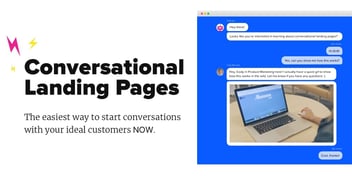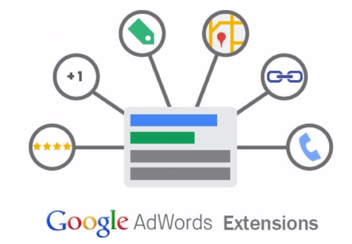How do I write persuasive email subject lines and CTAs?
Anna Butler
20 January 2021

Good email campaigns aren’t necessarily about high volume, but the ability to engage and convert. This is why the quality content of your content is important. Use great images (there are lots of free sources for quality royalty-free images out there) and write catchy copy.
Good writing starts with your email subject line and continues right through to your email’s call to action (CTA) and footer. You can write the copy for your next promotional email yourself, or hire someone to write it for you. Either way, don’t forget to proof your writing so you don't end up sending an embarrassing typo to your entire email list!
Tools like Grammarly or in-build spell-checkers that automatically flag questionable spelling and grammar can be extremely useful. However, don’t blindly accept all suggested changes. Even the most sophisticated automated editor can’t understand all the nuances of the English language.

Spell-checking tools are a great starting point, but reading the copy out loud is an excellent way to pick up mistakes and check the overall flow of the writing. It’s also worth getting someone else to read your copy to you, or using a text-to-speech tool if you’re flying solo. Don’t forget to read the captions, the subject line, and the header and footer to make sure they’re all correct and consistent with the rest of the copy.
If writing isn’t your strength, Refuel can take care of this daunting challenge for you. Our expert staff can put together templates and copy to meet your schedule and campaign goals.
Creating tantalising email campaigns
Probably THE most important part of any marketing email is the subject line! If your subject line sucks, then people are unlikely to click and open to see what amazing information lies within.
Obviously your email subject line needs to be short, sweet and seductive. It needs to grab the attention of your reader and entice them to open it up.
Creating a sense of urgency is a one tried and tested method. Consider wording like ‘50% off storewide today only’, or ‘3 techniques to guarantee a full night’s sleep’.
Of course, you need to then follow through on the promise your subject line makes. Nobody likes a ‘bait-and-switch’ where they expect one thing, only to end up getting something else altogether. So work hard to distil the key benefit for your audience, build trust, and give them a reason to always look forward to your emails.
 Personalisation is another proven way to increase open and click through rates on all types of emails. Most often this will use a customer’s name, but it can also use information such as location or past purchase history. For instance:
Personalisation is another proven way to increase open and click through rates on all types of emails. Most often this will use a customer’s name, but it can also use information such as location or past purchase history. For instance:
‘Andrew, it’s been awhile since we’ve seen you.’
‘Calling Toowoomba coffee lovers!’
‘Need a handbag to complement your new shoes?’
A good email service provider will give you the tools to segment your lists and even automate personalised emails based on certain triggers. Despite being ridiculously easy, the majority of businesses don’t take advantage of personalisation, so here’s your chance to take an easy win!
Use links and make your calls to action clear
Each email should include a call to action button with a link to a landing page, sales page, website or blog post. Make it clear what action you want the reader to take. Use action verbs such as ‘buy’, ‘book now’, ‘call’, or whatever action is appropriate:
- RSVP to an event - link to the event registration page
- Buy something - link to the specific product page
- Share a photo to social media - link to the relevant social media page
Once they click the link in the CTA button, they should be directed to the page or site where they need to follow through.
Don’t try to do too much in a single email; it’s better to have one, obvious button that states the CTA (Buy Now) than six different options. If you have a lot going on, send out a series of emails, but keep the intent of each clear and easy to figure out.
People are busy and skim through emails fast, particularly on their mobile. Make it as simple as possible to find the information the reader needs. Clever use of white space, colour and fonts in your email and CTA help the important information stand out.
Test. Optimise. Repeat.
There are a few things you should test before you send your email campaign. The very first round of testing should be to see how your email looks in different email platforms. What might look great in your Outlook inbox, might be a hot mess in your client’s Apple Mail inbox.
There are plenty of free and paid online tools out there that let you preview your email in different platforms and on different devices to avoid any ugly mishaps.
You should also review your data to see what time of day your recipients open email from you - is it morning, evenings, mid-week or weekends? Alternatively, some email service providers will crunch the data for you and automatically send your emails at the optimum open time for each individual on your list. That’s going to save you a lot of time and effort! It’s also a good idea to check your lists to make sure email addresses are up-to-date, removing any that bounce.

Once you’ve made sure everything is ready to go and your emails have been sent, the process of tweaking and refining begins. Track your results and run a series of A-B tests to sharpen and refine your message.
Each test should change only one or two things, for example: the title, the image, OR the introductory sentence. If you start changing too many elements at the same time it’s impossible to know which change is making a difference.
Email marketing is most effective when you keep experimenting, but make sure you’re testing things that can actually have an impact on your open rate. Keep track of results and compare carefully. Try to find the very best combination of wording, images, links, time of day to send emails and any other factors that might have an effect.
Don’t forget to make sure your emails are optimised for mobile devices and always include an unsubscribe option to stay legally compliant. Platforms like HubSpot can automatically insert the legally required wording, but periodically check legislation in your region for any updates or changes to local laws.



